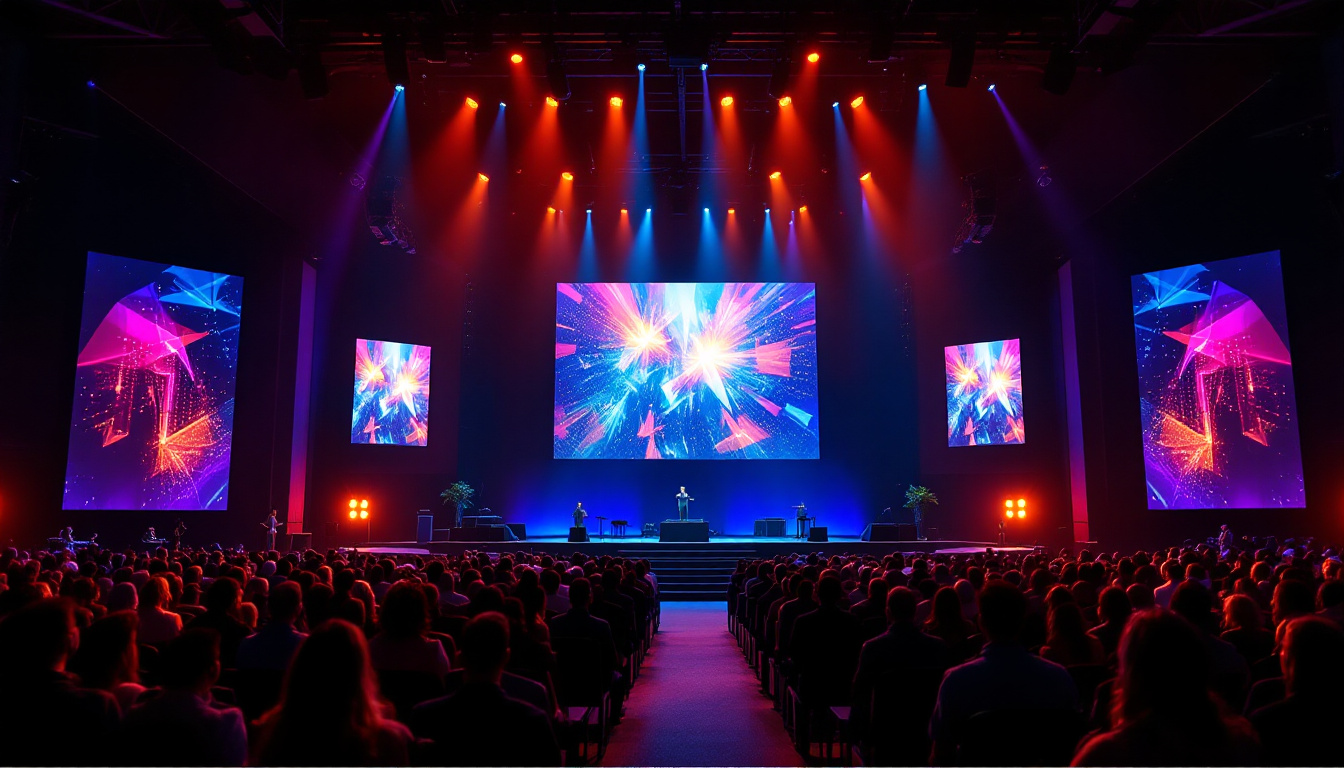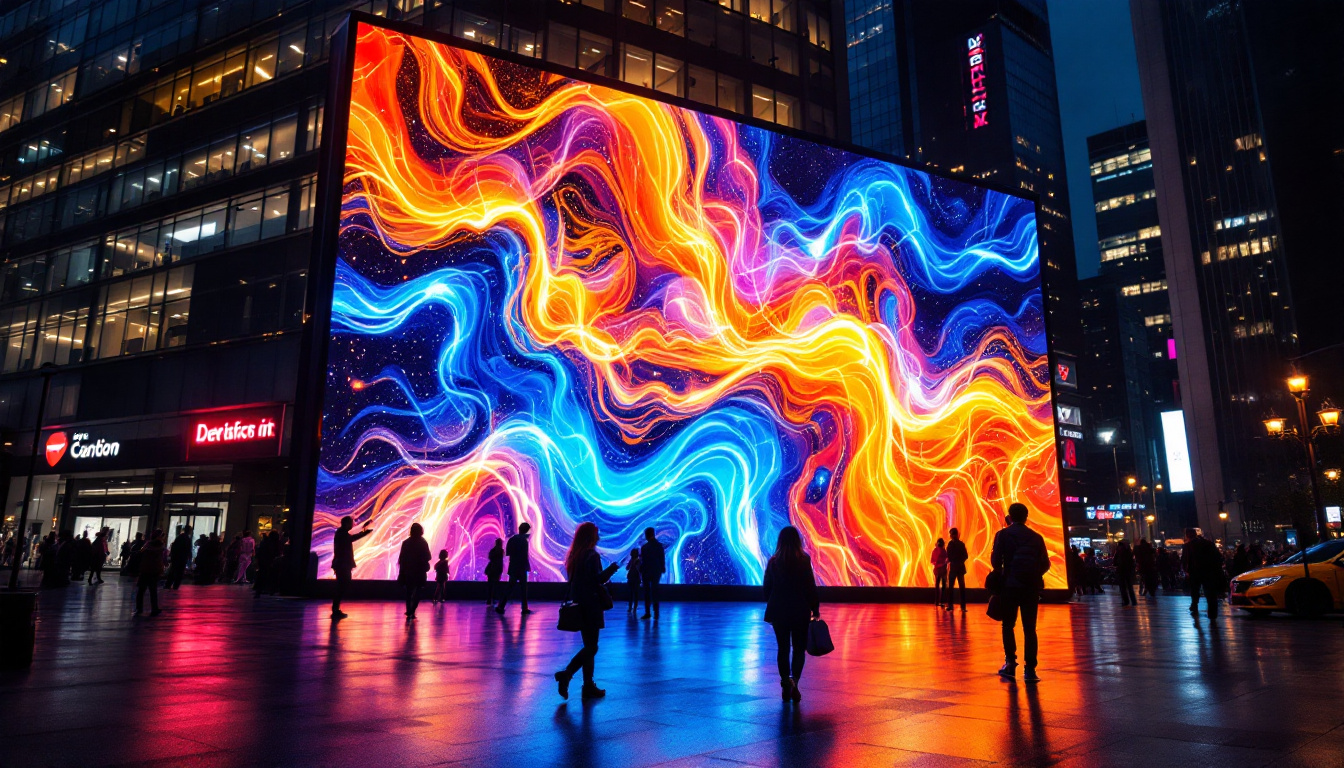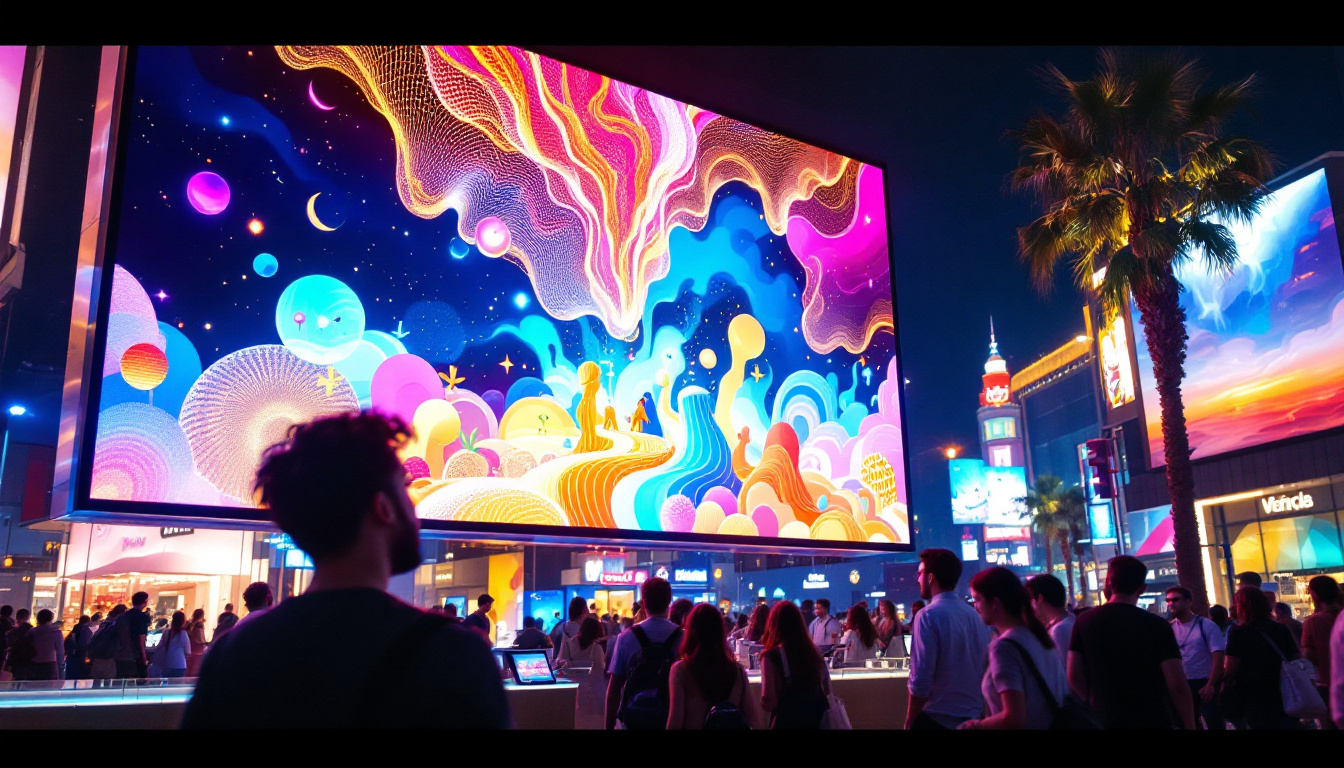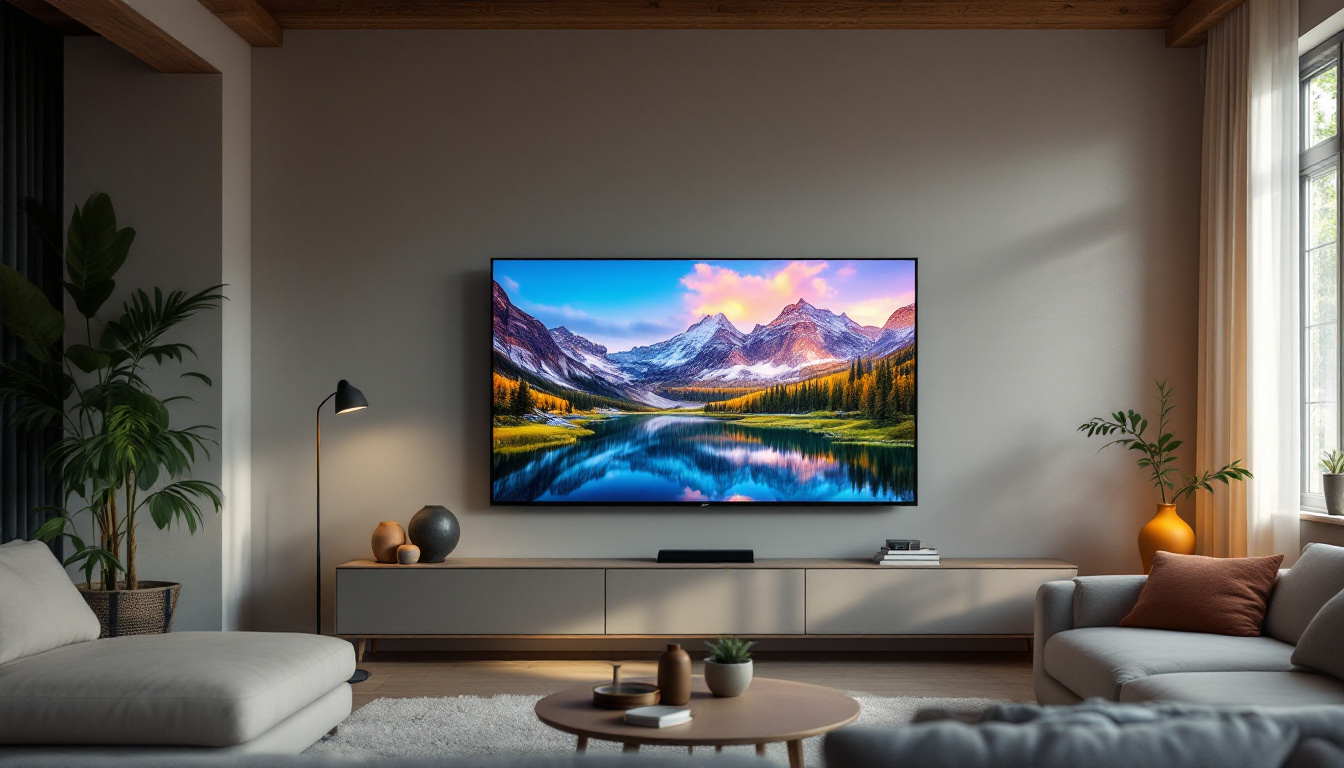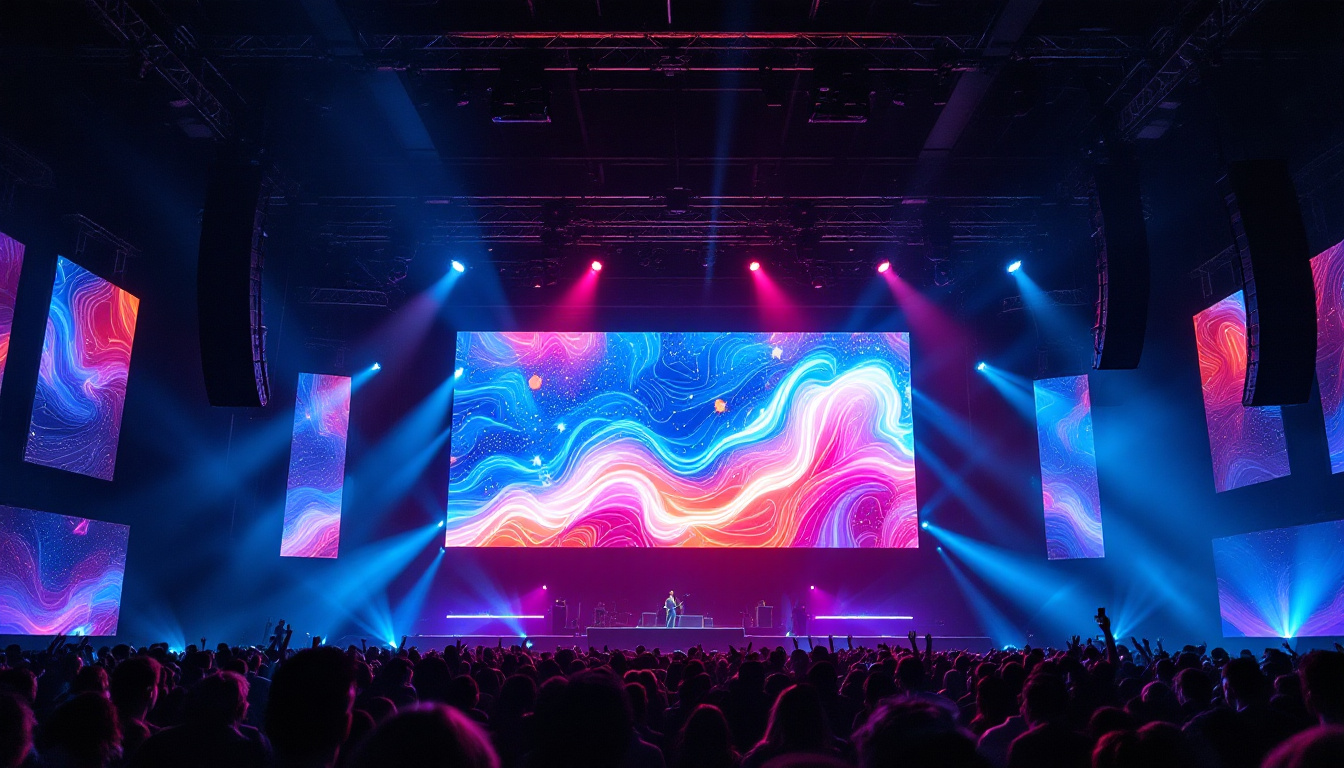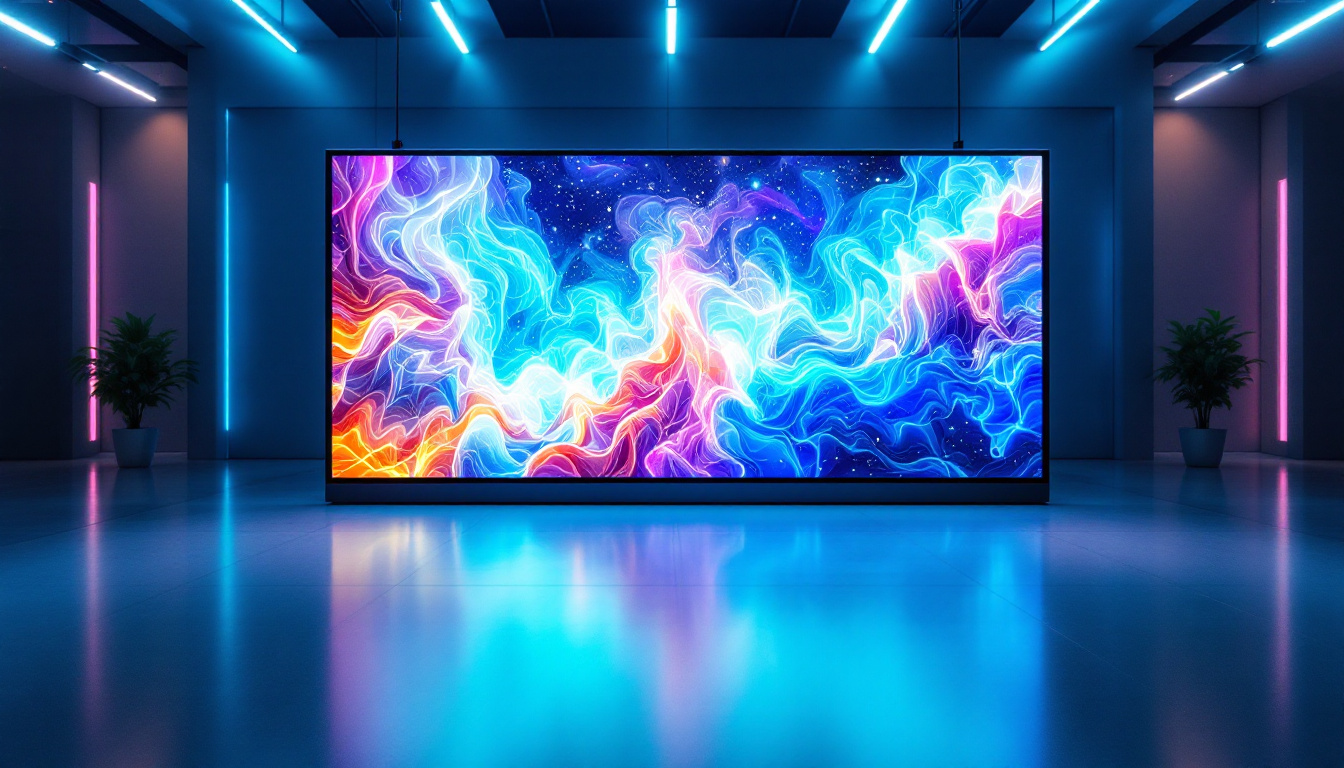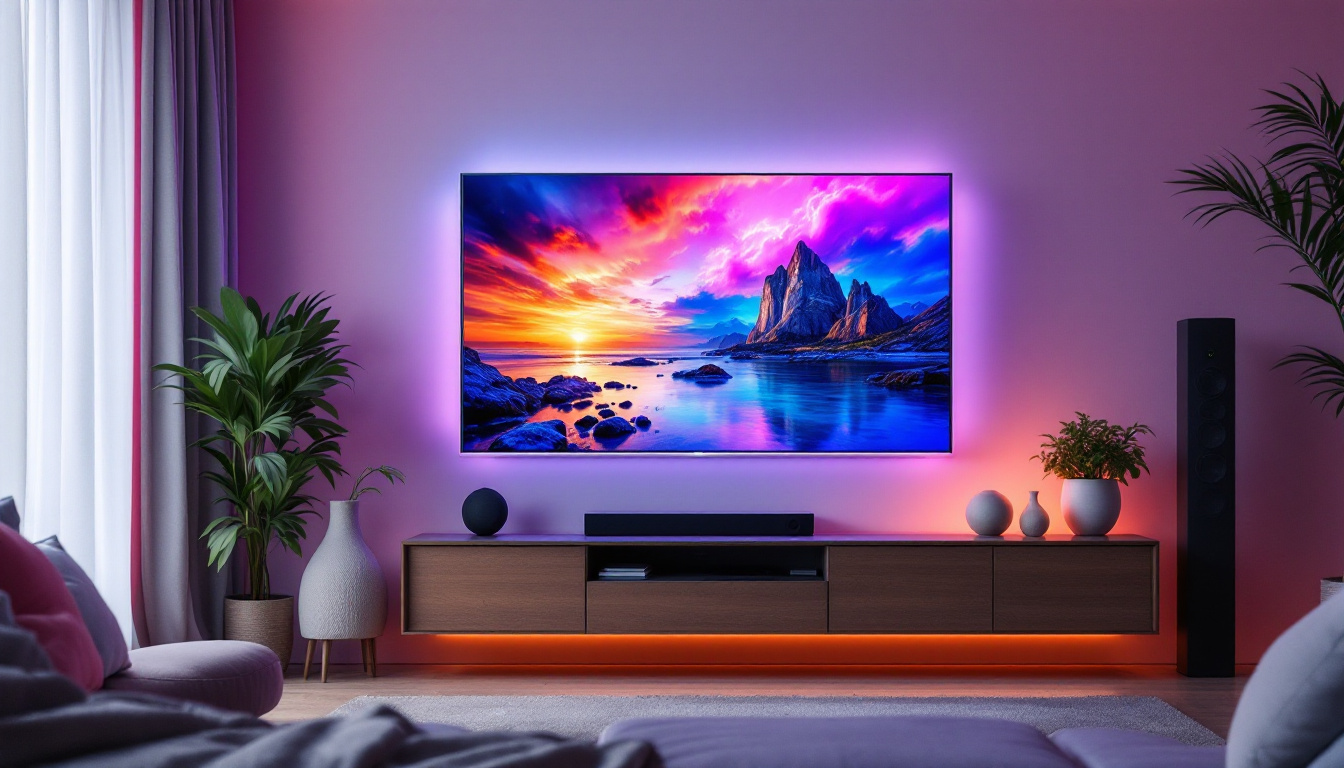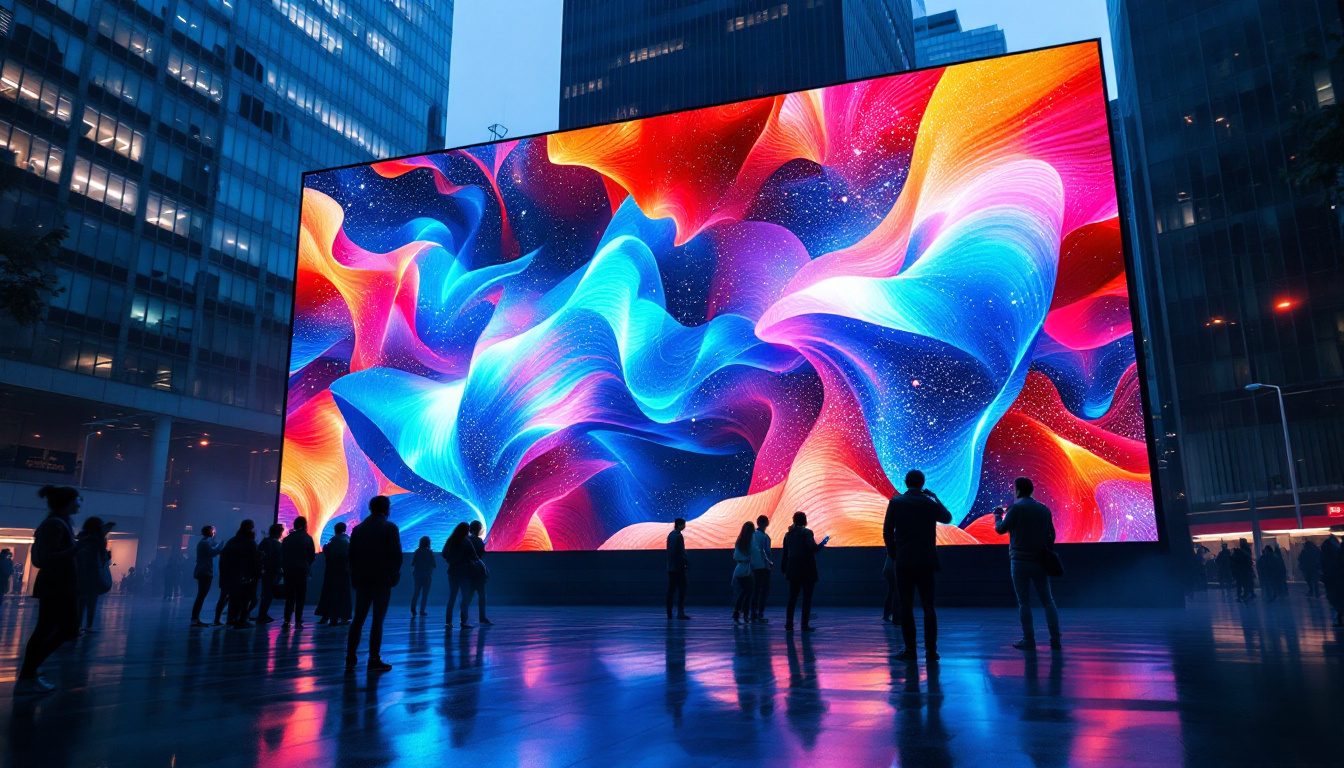The design of a church stage plays a crucial role in creating an engaging worship experience. With technology evolving rapidly, LED displays have emerged as a popular choice for backdrop designs. This article delves into the intricacies of LED displays in church stage design, exploring their benefits, types, and best practices for implementation.
Understanding LED Displays
LED displays are composed of numerous light-emitting diodes that work together to create vibrant images and videos. Their flexibility and versatility make them an ideal choice for various applications, including church stage designs. Unlike traditional projection systems, LED displays can provide brighter, sharper images, even in well-lit environments. This quality allows churches to enhance their worship experience, making sermons and visual presentations more engaging for congregants. Moreover, the ability to customize the size and shape of LED displays means that they can be tailored to fit any stage or sanctuary layout, maximizing visibility for all attendees.
How LED Displays Work
The technology behind LED displays involves a matrix of pixels, each made up of red, green, and blue diodes. By adjusting the intensity of each color, a wide spectrum of colors can be produced, allowing for stunning visuals. This capability is particularly beneficial for churches that wish to convey messages through dynamic imagery during services. Furthermore, the rapid refresh rates of LED displays enable smooth transitions and animations, which can be used to enhance worship themes or seasonal decorations. This dynamic capability not only captivates the audience but also helps to create a more immersive atmosphere during services, encouraging deeper engagement and participation.
Advantages of LED Displays
One of the most significant advantages of LED displays is their brightness. They can easily compete with ambient light, ensuring that visuals remain clear and impactful. Additionally, LED technology is energy-efficient, which can lead to reduced operating costs over time. Their longevity also means that they require less frequent replacement compared to traditional lighting options. Beyond these practical benefits, LED displays also offer superior color accuracy and contrast ratios, allowing for a more vivid representation of images and videos. This is particularly important for churches that utilize multimedia presentations to enhance their messages, as it ensures that every detail is rendered beautifully, making the overall experience more memorable for the congregation.
Types of LED Displays
When considering LED displays for church stage design, it’s essential to understand the various types available. Each type has unique features that cater to different needs and environments.
Indoor LED Displays
Indoor LED displays are designed for use within enclosed spaces. They typically have a higher pixel density, resulting in clearer images viewed from closer distances. These displays are ideal for churches that conduct services in smaller auditoriums or sanctuaries, where congregants are seated relatively close to the stage. The vibrant colors and sharp visuals can enhance the worship experience, making it easier for the congregation to engage with multimedia presentations, song lyrics, or sermon notes displayed on the screen. Additionally, many indoor LED displays come with advanced features such as adjustable brightness and contrast settings, allowing for optimal viewing in various lighting conditions, from bright daylight to dimmed evening services.
Outdoor LED Displays
Outdoor LED displays are built to withstand various weather conditions, making them suitable for churches that host events outside. They are generally larger and have lower pixel density compared to indoor displays, as viewers are typically positioned further away. These displays are perfect for large gatherings, festivals, and community outreach events. With their robust construction, outdoor LED displays can resist rain, wind, and extreme temperatures, ensuring that the message is conveyed clearly regardless of the weather. Furthermore, many outdoor models come equipped with high-brightness technology, making them visible even in direct sunlight, which is crucial for outdoor events during the day. This visibility can significantly enhance the impact of announcements, live streaming of services, or special events, drawing in passersby and engaging the broader community.
Modular LED Displays
Modular LED displays offer flexibility in design and configuration. They consist of individual panels that can be arranged in various shapes and sizes, allowing churches to create custom backdrops that fit their specific needs. This adaptability is particularly beneficial for churches that want to change their stage design frequently or adapt to different themes for various services. The modular nature also means that churches can start with a smaller setup and expand as their needs grow or as budgets allow. Additionally, these displays can be used creatively to form unique visual experiences, such as curved or multi-dimensional screens that captivate the audience’s attention. With the ability to integrate dynamic content, churches can utilize these displays for not just worship services but also for special events, youth gatherings, and community celebrations, making them a versatile tool in enhancing the church’s visual outreach.
Designing the Backdrop with LED Displays
Creating an effective backdrop using LED displays involves careful planning and design. The backdrop should complement the overall aesthetic of the church while enhancing the worship experience.
Choosing the Right Content
The content displayed on LED screens should resonate with the congregation and align with the message of the service. This can include scripture verses, worship lyrics, and thematic images. Engaging visuals can enhance the emotional impact of the service, making it more memorable for attendees.
Color and Lighting Considerations
Color plays a vital role in stage design. The colors used in the LED display should harmonize with the church’s branding and the mood of the service. Additionally, lighting should be carefully coordinated with the LED display to avoid glare and ensure that the visuals are easily seen without straining the eyes.
Creating Dynamic Backgrounds
One of the significant advantages of LED displays is their ability to create dynamic backgrounds. Churches can use animations, video loops, or changing images to keep the backdrop fresh and engaging throughout the service. This dynamic element can help maintain the congregation’s attention and enhance the overall worship atmosphere.
Technical Considerations for LED Displays
While the aesthetic appeal of LED displays is crucial, technical aspects must also be addressed to ensure optimal performance. Understanding these technical requirements can help churches make informed decisions when selecting and installing LED displays.
Resolution and Pixel Pitch
Resolution and pixel pitch are critical factors that influence the quality of the images displayed. Pixel pitch refers to the distance between the centers of two adjacent pixels. A smaller pixel pitch results in a higher resolution, which is essential for indoor displays where viewers are closer. For outdoor displays, a larger pixel pitch may suffice, as the viewing distance is greater.
Installation and Maintenance
Proper installation is vital for the performance and longevity of LED displays. It’s advisable to work with professionals who have experience in installing LED technology. Regular maintenance is also essential to ensure that the displays function correctly and continue to deliver high-quality visuals. This includes routine cleaning, software updates, and hardware checks.
Connectivity and Control Systems
LED displays require robust connectivity options and control systems to manage the content displayed. Churches should consider systems that allow for easy updates and changes to the content, whether through a computer, tablet, or dedicated control panel. This flexibility enables worship leaders to adapt the visuals quickly based on the flow of the service.
Integrating LED Displays with Other Technologies
To maximize the impact of LED displays, churches can integrate them with other technologies. This integration can create a cohesive experience that enhances worship services.
Sound Systems
Pairing LED displays with high-quality sound systems can elevate the worship experience significantly. Synchronizing visuals with audio can create a more immersive environment, helping congregants feel more connected to the message being conveyed. This integration is especially effective during musical performances or multimedia presentations.
Lighting Systems
Effective lighting design complements LED displays and enhances their visual impact. Using a combination of spotlights, ambient lighting, and backlighting can create depth and dimension on stage. Lighting should be coordinated with the content displayed on the LED screens to create a harmonious atmosphere that supports the overall theme of the service.
Live Streaming and Recording
In today’s digital age, many churches are embracing live streaming and recording of services. Integrating LED displays with live streaming technology can enhance the viewing experience for online audiences. Capturing dynamic visuals from the stage can make online services more engaging and help reach a broader audience.
Best Practices for LED Display Usage
To ensure that LED displays are used effectively in church stage design, several best practices should be observed. These practices can help maximize the benefits of LED technology while creating a positive worship environment.
Consistency in Design
Consistency in design is key to creating a cohesive worship experience. The visuals displayed on the LED screens should align with the church’s branding and the overall theme of the service. This consistency helps reinforce the message and creates a more unified atmosphere for congregants.
Engaging the Congregation
Engagement is essential in any worship service. Using LED displays to involve the congregation can enhance participation. This can include displaying lyrics for sing-alongs, interactive polls, or even live social media feeds. By making the congregation a part of the experience, churches can foster a sense of community and connection.
Regular Updates and Refreshes
To keep the worship experience fresh, it’s important to regularly update the content displayed on LED screens. This can include seasonal themes, special events, or new sermon series. Regularly refreshing the visuals can help maintain interest and excitement among congregants, making each service feel unique.
Conclusion
LED displays have transformed the landscape of church stage design, offering vibrant visuals that enhance the worship experience. By understanding the technology, types, and best practices surrounding LED displays, churches can create engaging backdrops that resonate with their congregations. As technology continues to evolve, embracing these advancements will ensure that churches remain relevant and impactful in their mission.
Ultimately, the goal of any church stage design is to facilitate worship and connection. LED displays provide an innovative way to achieve this, creating an environment that inspires and uplifts. As churches explore the possibilities of LED technology, they can look forward to a future filled with creativity and engagement.
Discover LumenMatrix LED Display Solutions
Ready to elevate your church stage design with the latest in LED display technology? LumenMatrix is at the forefront of creating immersive environments that inspire and connect. From Indoor and Outdoor LED Wall Displays to specialized solutions like Vehicle, Sports, and Floor LED Displays, our products are designed to transform your worship space into a dynamic visual experience. Embrace the future of visual communication with LumenMatrix’s Custom, All-in-One, and Transparent LED Displays. Check out LumenMatrix LED Display Solutions today and bring your message to life with unparalleled clarity and impact.

